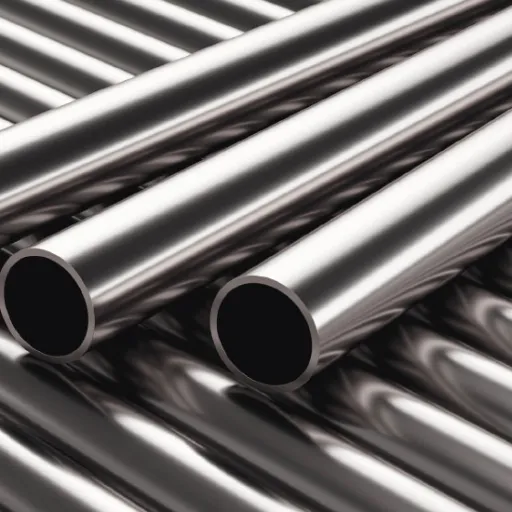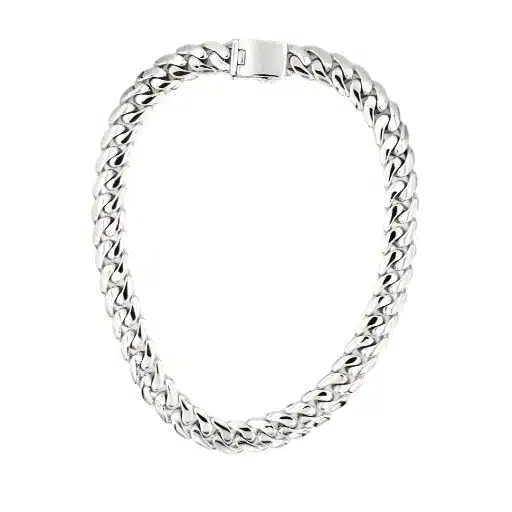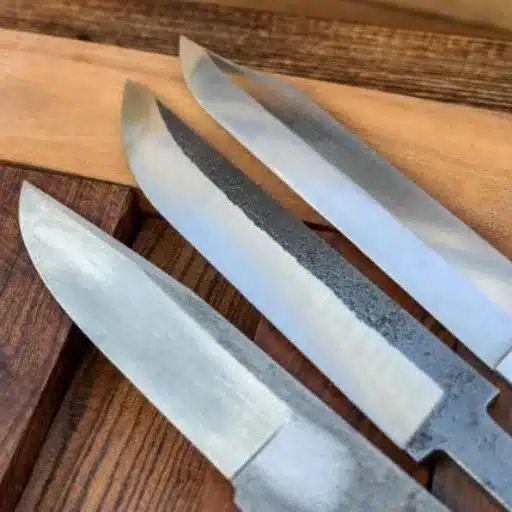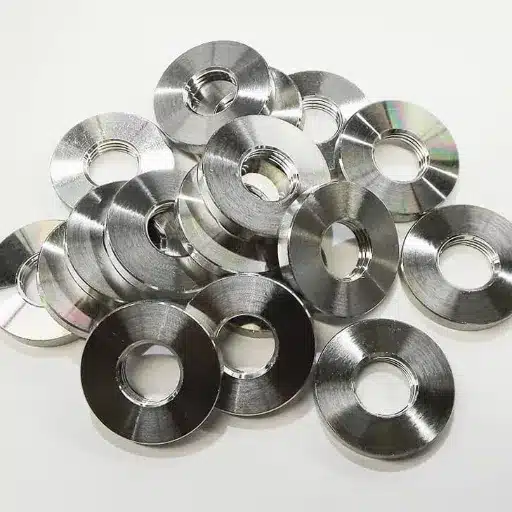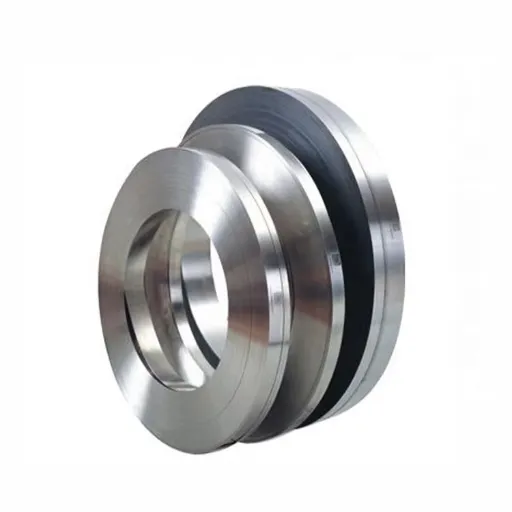When it comes to any premium knife steel, CPM S90V is a true game changer in the bladesmithing and high-performance cutlery industry. While it is well-regarded for its unparalleled edge retention, immense hardness, and heavy resistance to rapid wear, it has become nearly synonymous with the best steel among enthusiasts and professionals alike. So, what are the distinct characteristics that make CPM S90V truly special, and perhaps more intriguing? How is it able to uphold such impressive performance? This article will explain the science and craftsmanship behind this masterful steel, its main characteristics, and why it remains a standard for knife-making. Given that you may be either a collector, a maker, or someone whose passion lies in prime quality knives, this guide will steer you to figure out why CPM S90V stands out all by itself.
Introduction to CPM S90V Steel
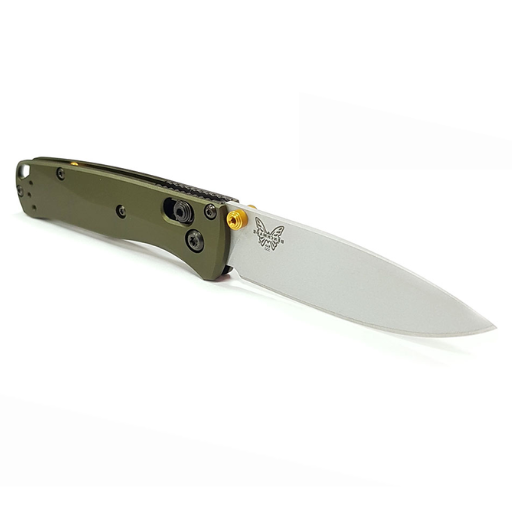
High-end stainless steel, designed explicitly with CPM S90V, is engineered to maintain and protect the edge while resisting wear. This is due to the high content of vanadium carbides, which give the steel its hardness and durability. Being a CPM tool steel, it guarantees a uniform composition and fine-grained structure that yields better performance and greater riveting. More difficult to sharpen than most steels, it retains an edge longer than any other and is thus regarded as one of the premier choices for high-performance knives.
What is CPM S90V?
CPM S90V is a high-quality stainless steel with excellent wear resistance, edge retention, and durability, making it artistically valued in the manufacture of precision cutting tools and knives.
History and Development of CPM S90V
| Key Point | Details |
|---|---|
| Original Name | CPM-420V |
| Year Introduced | 1996 |
| Developed By | Crucible Industries |
| Manufacturing Process | Crucible Particle Metallurgy (CPM) |
| Key Composition | 2.3% Carbon, 14% Chromium, 9% Vanadium |
| Primary Features | High wear resistance, edge retention, corrosion resistance |
| Innovative Change | Reduced chromium to 14% for better vanadium carbide formation |
| Hardness Range | 58-61 HRC (can go higher with specific heat treatments) |
| Early Applications | High-end knives, aerospace, and tooling |
| Challenges | Difficult to sharpen and machine |
| Notable Users | Benchmade, Spyderco, and other premium knife manufacturers |
| Market Position | Boutique steel for high-performance and premium knives |
| Evolution | Inspired development of CPM-S110V and other high-vanadium steels |
Comparison with Other Knife Steels
| Parameter | CPM S90V | CPM S110V | M390 | D2 |
|---|---|---|---|---|
| Wear Resistance | Exceptional | Slightly higher than S90V | High | Moderate |
| Edge Retention | Excellent | Comparable to S90V | Excellent | Good |
| Corrosion Resistance | Good | Better than S90V | Excellent | Low |
| Toughness | Moderate | Lower than S90V | Moderate | High |
| Ease of Sharpening | Difficult | More difficult than S90V | Moderate | Easy |
| Hardness Range (HRC) | 58-61 | 59-62 | 60-62 | 58-61 |
| Primary Use | High-end knives, tools | Premium knives, tools | Premium knives, tools | Budget knives, tools |
| Manufacturing Process | Powder Metallurgy | Powder Metallurgy | Powder Metallurgy | Conventional |
| Key Alloy Elements | Vanadium, Chromium, Carbon | Vanadium, Niobium, Chromium | Vanadium, Chromium, Molybdenum | Chromium, Carbon |
| Market Position | Premium, boutique steel | Ultra-premium steel | High-performance steel | Affordable, durable steel |
Composition and Properties of CPM S90V
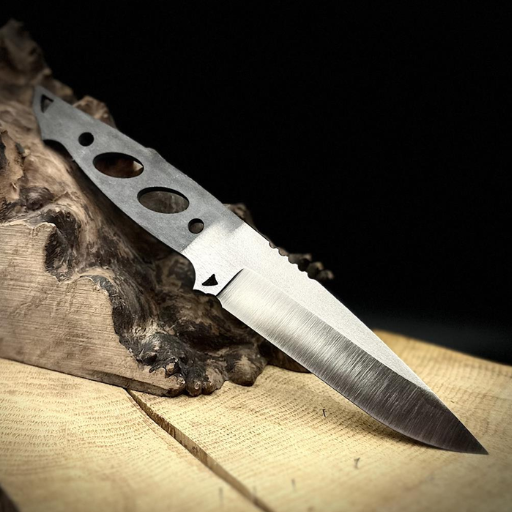
CPM S90V is made from stainless steel of a highly desirable grade, known for its excellent wear and corrosion resistance. It achieves hard vanadium carbides due to the high vanadium content of 9%, resulting in edge retention with particular technical brilliance. Additionally, the steel contains 14% chromium to protect against corrosion, while the carbon content, at 2.3%, enhances its strength and hardness. This balanced composition makes CPM S90V a consideration among the best for knives and cutting tools that demand performance for long-lasting practicality.
Chemical Composition Breakdown
CPM S90V is considered a Powder Metallurgy stainless steel due to its unique and advanced composition, which brings exceptional properties to CPM S90V. Its chemical composition consists of the following:
- Carbon (C) – 2.30%
Carbon is significant in contributing to the hardness and wear resistance of CPM S90V. The high carbon content enables superior edge retention.
- Chromium (Cr) – 14.00%
Chromium imparts excellent corrosion resistance to CPM S90V. At a level of 14%, it becomes the protective agent over steel, actively resisting any rust formation or degradation.
- Vanadium (V) – 9.00%
Vanadium confers high wear resistance by forming hard vanadium carbides. Vanadium carbides are significantly more complex than chromium carbides, contributing to CPM S90V’s exceptional wear resistance.
- Molybdenum (Mo) – 1.00%
Molybdenum imparts good toughness and enhances the corrosion-resisting properties, making CPM S90V suitable for severe environmental conditions.
- Cobalt (Co) – 2.00%
Cobalt enhances wear resistance and facilitates heat treatment by stabilizing hardness in the steel.
- Manganese (Mn) – 0.50%
Manganese improves tensile strength and acts with other elements to increase hardenability.
- Silicon (Si) – 0.50%
Silicon contributes to the toughness and overall strength of the steel.
- Phosphorus (P) & Sulfur (S) – Trace amounts (< 0.03%)
These elements are kept to tight limits to ensure the purity and quality of CPM S90V, countering any corrosive behavior that may affect its performance.
The above elemental composition renders CPM S90V among the finest steels into applications demanding performance, from wear resistance to edge retention and corrosion resistance.
Physical Properties and Performance
- Hardness
The Rockwell Hardness (HRC) of CPM S90V is approximately 58-61, which provides superb edge retention while allowing some degree of toughness.
- Wear Resistance
With its outstanding wear resistance, CPM S90V surpasses many other steels in applications requiring prolonged heavy abrasive action.
- Toughness
While wear resistance is optimized, the steel also offers reasonable toughness for all tasks that demand good toughness but that cannot chip or break.
- Corrosion Resistance
Because chromium makes up the majority of the steel, CPM S90V resists rust and corrosion exceptionally well in harsh environments.
- Edge Retention
CPM S90V steel is highly regarded for its exceptional ability to maintain edge retention, remaining sharp significantly longer than many other high-performance steels.
Comparison with CPM M4 and Other Alloys
| Parameter | CPM S90V | CPM M4 | CPM S110V | M390 |
|---|---|---|---|---|
| Wear Resistance | Exceptional | High | Slightly higher than S90V | High |
| Edge Retention | Excellent | Very good | Comparable to S90V | Excellent |
| Corrosion Resistance | Good | Low | Better than S90V | Excellent |
| Toughness | Moderate | High | Lower than S90V | Moderate |
| Ease of Sharpening | Difficult | Easier than S90V | More difficult than S90V | Moderate |
| Hardness Range (HRC) | 58-61 | 62-64 | 59-62 | 60-62 |
| Primary Use | High-end knives, tools | Heavy-duty tools, knives | Premium knives, tools | Premium knives, tools |
| Manufacturing Process | Powder Metallurgy | Powder Metallurgy | Powder Metallurgy | Powder Metallurgy |
| Key Alloy Elements | Vanadium, Chromium, Carbon | Vanadium, Molybdenum, Carbon | Vanadium, Niobium, Chromium | Vanadium, Chromium, Molybdenum |
| Market Position | Premium, boutique steel | Tough, high-performance steel | Ultra-premium steel | High-performance steel |
Applications of CPM S90V Steel
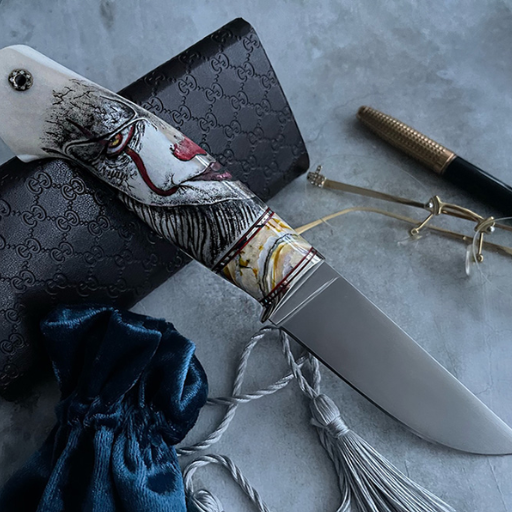
CPM S90V steel is utilized in applications where exceptional wear resistance and edge retention are required. It is used mainly in high-end knife making, particularly for outdoor, survival, and tactical knives. Furthermore, it is used in precision cutting tools and parts that are highly worn in situations, such as industrial machines. Professionals and enthusiasts select this tool for its topmost performance, where utmost reliability and long life are demanded.
Common Uses in the Knife Industry
S30V steel is regarded as a high-grade material in the knife industry due to its exceptional wear resistance and sharpness. Accordingly, it is most often used in high-performance folding knives, fixed-blade knives, and multi-tools. Folding knives made from CPM S30V are particularly favored by everyday carry enthusiasts because the steel can retain its edge for a prolonged period before needing to be sharpened again. Similarly, fixed-blade knives made of CPM S30V steel receive serious recognition in extreme outdoor, survival, and tactical applications for their performance in harsh working conditions.
According to recent industry information, there has been a steady increase in demand for CPM S30V knives. An illustration of this is that knife makers say this steel discriminates well between hardness (usually rated in the range of 58-61 HRC) and corrosion resistance, thereby marking it as highly preferable for kitchen and professional-grade cutting tools. These features help maintain a sharp edge for detailed work, such as slicing meat or vegetables, further necessitating less frequent upkeep. CPM S30V steel stands as a preferred option in custom knives, sufficiently endorsed by collectors for its practical attributes and recognition as a precious metal.
The rise of e-commerce platforms has bolstered the popularity of CPM S30V across various brands. Companies like Benchmade, Spyderco, and Buck Knives have championed the use of this steel in their flagship knife models, testifying to the steel’s resolute performance, which customers highly appreciate. Sales statistics often demonstrate that knives manufactured from CPM S30V steel are sold at higher price points, highlighting the value of this steel in both professional and recreational markets. Whether it’s campsites, kitchens, or even fine displays, for all of these situations, CPM S30V is a name that resonates confidently in cutting-edge craftsmanship.
Applications in Other Industries
While highly appreciated in knife making and manufacture, CPM S30V is known as a versatile steel applicable in a range of fields, where it has made great strides in five of them below:
- Medical Tools and Instruments
Due to its excellent corrosion resistance and edge retention, CPM S30V is utilized in the manufacture of various surgical tools and precision medical instruments. Its ability to withstand harsh usage and critical procedures renders it less prone to replacement in frequent use, thereby ensuring cost efficiency in hospitals and medical centers.
- Aerospace Components
These are the most wear-resistant and highly durable applications. CPM S30V is commonly used for manufacturing small aerospace components, such as fasteners and fittings, that are exposed to extreme conditions.
- Automotive Manufacturing
These are the applications where the ability of CPM S30V to attain hardness and toughness would be exploited. High-performance automotive parts, specific tools for assembling vehicles, or any other parts that are subject to mechanical stress that need to be fulfilled for CPM S30V make-assurance longevity and precision.
- Watchmaking Industry
The finer grain structure and polishability of CPM S30V make it a preferred metal for watchmaking processes that prioritize durability and luxury. High-end wristwatches utilize it for bezels, clasps, and other components that balance aesthetics and functionality.
- Sporting and Tactical Equipment
In addition to knives, CPM S30V is also applied to multi-tools, climbing equipment, and tactical gear. Their perfect combination of strength, wear resistance, and sharpening takes the reliability and functionality of these products one step further, making them very popular among outdoor and tactical professionals.
Being extra adaptable and performant, CPM S30V has become a material of choice in industries that demand its presence, thus explaining its vast relevance and impact.
Benefits for Specific Users
Outdoor Enthusiasts
Whether hiking, camping, or climbing, the most demanding users will find that CPM S30V never lets them down. Due to its incredible corrosion resistance, this hard tool will continue to serve its purpose even in adverse weather or humid conditions. The consignee benefits from the durability of its edge, which means it never has to be sharpened, an advantage to have during long outdoor trips. Manufacturing data indicate that the wear resistance of CPM S30V is approximately 60% higher than that of traditional stainless steels, making it the preferred steel for survival knives and multi-tools.
Tactical Professionals
Law enforcement officers and military professionals demand that their equipment perform flawlessly when lives are at stake. The toughness of CPM S30V grants impact resistance and abrasion resistance, endowing tactical equipment such as folding knives, combat blades, and other tools with the ability to withstand abuse.” According to reports from various knife manufacturers using CPM S30V, knives made from it can retain a sharp edge at least 20% longer when subjected to harsh use compared to other premium steels.
Culinary Experts
While chefs and home cooks delight in CPM S30V for its sharpness retention and resistance to staining by acid or salt, the ease of maintenance enables professional chefs to focus all their attention on precision cutting rather than the care of their knives. According to a case study by a major knife brand, knives made of CPM S30V were able to maintain their cutting ability for more than twice the period compared to knives made of ordinary steel; therefore, these knives appear to be a worthy investment in the kitchen.
Industrial Workers
For craftsmen and carpenters, CPM S30V should provide them with hands-on tools that can withstand abrasive and high-pressure action. The peculiar microstructure, brought about by powdered metallurgy, enables these tools to resist long-term abrasive wear that most tools suffer from due to intermittent use. Industrial data also confirm that cutting edges formed on tools using CPM S30V are highly resistant to deformation, thereby improving efficiency in demanding work environments.
This high level of versatility in CPM S30V undoubtedly renders it a choice tool across these variable user groups, bestowing a cutting-edge advantage in their specific lines of work.
Manufacturing and Treatment of CPM S90V
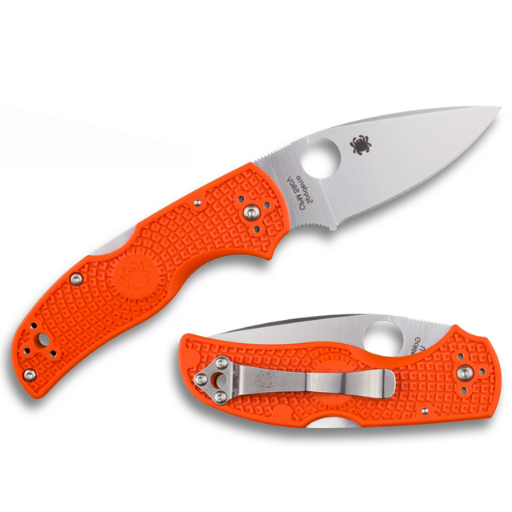
CPM S90V is manufactured through the Crucible Particle Metallurgy (CPM) process, which enhances wear resistance and toughness in the alloy. The powdered metallurgy process ensures an even carbide distribution, resulting in a steel with a finer and more uniform microstructure than conventional steel manufacturing processes.
The heat treatment of CPM S90V is crucial for achieving optimal results. It generally involves heating at hardening temperatures in a controlled manner, followed by quenching and tempering. A properly heat-treated CPM S90V will be harder and maintain its edge better, making it best suited for premium-grade cutting tools and blades.
Heat Treatment Processes
The heat treatment of CPM S90V encompasses various stages that are systematically controlled to ensure the optimum performance characteristics of the steel, primarily including hardness, toughness, and edge retention. Below is an elaborated account of the tested standard heat treatment process, based on the usual practices in the industry and the latest information available on this subject:
- Austenitizing
Austenitizing involves heating the steel to high temperatures, allowing it to assume an austenitic form. The temperature usually recommended for austenitizing CPM S90V is between 2050°F (1120°C) and 2150°F (1175°C), depending on the desired properties of the final product. Increased austenitizing temperatures generally provide better wear resistance due to increased carbide formation, but must be balanced against other properties, such as toughness.
- Quenching
After the steel has been held above the critical temperature (austenitizing temperature), it will be cooled rapidly to preserve the attained microstructure during the heat treatment period. The cooling from the austenite phase may be via oil quenching, forced air, or inert gas, depending upon the available equipment. The further cryogenic treatment immediately after quenching seeks to convert retained austenite into martensite in CPM S90V. Cryogenic temperature has an average value of -300°F (-184°C).
- Tempering
After quenching, tempering relieves the steel from brittleness while achieving the required hardness. The tempering of CPM S90V typically occurs between 400°F (204°C) and 600°F (316°C). Double tempering is often preferred to ensure greater stability and performance in demanding conditions.
- According to data, tempering at a lower temperature of around 400°F (204°C) results in higher hardness, nearly exceeding 60-63 HRC, which favors the steel’s edge retention.
- On the other hand, higher tempering temperatures of around 600°F (316°C) will slightly reduce hardness while improving impact resistance and toughness.
- Hardness Testing
After heat treatment, the hardness of the steel will be tested to ensure it meets the performance requirements. A hardness of 59-63 HRC is typical for CPM S90V, offering a perfect compromise between wear resistance and toughness, making it suitable for applications such as knife blades, industrial tools, and precision components.
- Pre-Final Stress Relief
Finally, stress relief may be performed before the final grinding or finishing of the steel to minimize deformation during machining. This is achieved by heating the steel to 1000°F (540°C) for one hour before air cooling.
Through the optimization of each process step, the efficiency of CPM S90V is maximized, making it desirable in fields where edge retention and wear resistance stand paramount.
Grinding Techniques: Ground to a Zero
To achieve the desired performance characteristics with a CPM S90V-Grit-to-Zero edge, such as superior edge retention and wear resistance, one must exercise extreme care during grinding. Among the considerations and parameters of grinding CPM S90V, the following five details and techniques are recommended in attaining optimum results for grind-to-zero-edge operations:
- Coolant Usage
Sufficiency of coolant flow should remain continuous; otherwise, heat buildup shall be detrimental to the hardness of steel and damage its microstructure. A water-soluble type of coolant is frequently used to maintain cutting temperatures within a permissible range.
- Abrasive Selection
The selection of the abrasive is most important. CBN or diamond abrasives are recommended for CPM S90V, owing to its high wear resistance and carbide volume in the steel.
- Speed and Feed Rates
The speed of the grinding wheel and feed rate must always be adjusted with precision to prevent chippings on the surface or deformation. Usually, slower feed rates and moderate wheel speeds are selected to maintain grinding control.
- Grinding Angle
The constant grinding angle would lead to an even edge. Typically, the grinding angle ranges from 15 to 20 degrees for edges that are usually sharp and durable, depending on the specific requirements.
- Final Passes and Polishing
After preliminary grinding and light final passes of a few micrometers to achieve a smooth finish with precise edge geometry, fine polishing with ultra-fine abrasives can be performed to achieve a final finish.
By following the instructions above and utilizing the best tools and machinery, manufacturers can grind CPM S90V to a zero edge, thereby fully leveraging the exceptional properties of the steel.
Impact of Manufacturing on Performance
The manufacturing process directly affects how CPM S90V steel behaves, especially when aiming for a zero edge. From my experience, grinding and polishing must be controlled very tightly to achieve the optimal edge geometry and truly sharp edges. Consistency, combined with the use of excellent techniques, will preserve the durability and cutting ability of the steel, fully leveraging its advanced properties.
Advantages and Disadvantages of CPM S90V
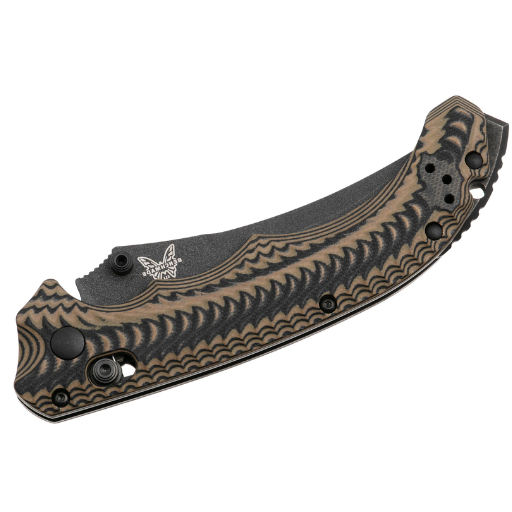
| Aspect | Advantages | Disadvantages |
|---|---|---|
| Wear Resistance | Exceptional, ideal for heavy use | None |
| Edge Retention | Excellent, holds sharpness for long periods | Difficult to sharpen |
| Corrosion Resistance | Good, suitable for most environments | Lower than some stainless steels |
| Toughness | Moderate, better than some high-carbide steels | Not suitable for extreme impact tasks |
| Hardness | High, supports excellent cutting performance | Requires precise heat treatment |
| Ease of Sharpening | Retains edge well | Very difficult to sharpen without diamonds |
| Applications | Premium knives, tools, and high-performance tasks | High cost limits widespread use |
| Machinability | Durable and wear-resistant | Challenging to machine and grind |
| Market Position | Premium, boutique steel | Expensive compared to other alloys |
Benefits Over Other Stainless Steels
| Parameter | Benefit of CPM S90V |
|---|---|
| Wear Resistance | Superior wear resistance for heavy-duty use |
| Edge Retention | Exceptional, lasts longer than most steels |
| Corrosion Resistance | Good balance of wear and corrosion resistance |
| Toughness | Better toughness than other high-carbide steels |
| Hardness | High hardness supports excellent performance |
| Carbide Structure | Fine vanadium carbides improve durability |
| Cutting Performance | Outstanding for prolonged cutting tasks |
| Premium Applications | Ideal for high-end knives and tools |
| Longevity | Outlasts many other stainless steel options |
| Market Position | Benchmark for premium stainless steel |
Potential Drawbacks and Limitations
CPM-S90V, while working wonders at a higher-performance level, has drawbacks worthy of careful consideration:
- High Cost
The CPM-S90V sits miles ahead of many standard stainless steel alloys in terms of pricing, thereby deterring budget-conscious consumers and manufacturers working in massive production.
- Challenging Sharpening Process
Due to its incredible hardness and wear resistance, sharpening CPM-S90V requires specialized equipment, such as diamond stones, which are not typically found in a typical household toolbox, making this a challenge for anyone lacking access to diamond stones.
- Less Tough
The CPM-S90V gives up on toughness, much like many high-hardness steels do, and hence, it is susceptible to chipping or cracking when subjected to heavy impact or lateral stress. Thus, it is less well-suited in areas where toughness is a must.
- Limited Availability
Because CPM-S90V is of premium grade, it is less readily available than the more common alloys. Due to the nature of the steel composition, lead times can be longer, the number of suppliers dwindles, and adoption is less widespread.
- Machining Difficulties
CPM-S90V causes manufacturers to suffer, in addition to its wear resistance and hardness. Machining and grinding require a higher level of techniques and tools, pushing up production costs and complexity.
Long-term Maintenance and Care
Maintenance enhances the performance and durability of CPM-S90V steel. I usually clean and store regularly. After using it, I dry the blade thoroughly to prevent corrosion, as it can still occur in some instances, despite its high corrosion resistance. From time to time, I apply a thin layer of oil to the blade’s surface to protect and preserve it for longer. Sharpening demands patience, along with having the right sharpening tools, such as diamonds or ceramics, due to their hardness. Such measures allow the steels of CPM-S90V to be in pristine condition for many years.
References
- Knife Steel Nerds
- Article: S90V and S125V Knife Steel – History, Properties, and How to Heat Treat
- This source provides an in-depth analysis of the history, properties, and performance of CPM S90V.
Link to article
- Knife Steel Nerds
- Article: Knife Steels Rated by a Metallurgist – Toughness, Edge Retention, and Corrosion Resistance
- Offers a metallurgist’s perspective on CPM S90V’s performance in various categories.
Link to article
- Blade HQ
- Article: Knife Steel Guide
- A comprehensive guide to knife steels, including CPM S90V, focusing on its edge retention, corrosion resistance, and brittleness.
Link to article
Frequently Asked Questions (FAQ)
What is the information and composition of CPM S90V?
CPM S90V is a high-performance stainless steel alloy known for its exceptional wear resistance and edge retention. It is composed of high carbon, chromium, molybdenum, and vanadium, which contribute to its toughness and hardness, typically achieving a hardness of around 58-62 HRC after proper heat treatment.
How does CPM S90V compare to other stainless steel alloys like S30V and S35VN?
CPM S90V offers better edge retention and wear resistance compared to S30V and S35VN due to its higher vanadium content, which facilitates the creation of a finer carbide structure. While S30V is easier to sharpen, S90V maintains its edge longer, making it ideal for applications where durability is critical.
What are the heat treat recipes for CPM S90V?
The heat treat recipe for CPM S90V typically involves austenitizing at around 1950°F, followed by a quench and tempering process to enhance its properties. Proper heat treatment is crucial to achieve the desired hardness and toughness, ensuring the knife blade performs optimally.
How does the wear resistance and edge retention of CPM S90V compare to carbon steel?
While carbon steel, such as 1095, can achieve excellent sharpness and is easy to sharpen, it generally lacks the corrosion resistance found in CPM S90V. CPM S90V excels in wear resistance and edge retention, making it suitable for demanding tasks, whereas carbon steel may require more maintenance due to its susceptibility to rust.
What is the toughness of CPM S90V compared to other steels like CPM 3V?
CPM S90V is known for its good toughness, although CPM 3V is often regarded as superior in this regard due to its specific composition, which is designed to withstand impact and stress. However, CPM S90V strikes a balance between toughness and edge retention, making it a popular choice for high-end knives.
Can you explain the metallurgy process of CPM S90V?
The metallurgy process of CPM S90V involves powder metallurgy, which allows for a uniform distribution of carbides and a finer grain structure. This process enhances the steel’s overall performance by providing better edge stability and resistance to chipping, making it ideal for custom knife makers.
Is CPM S90V easy to sharpen compared to other knife steels?
While CPM S90V offers excellent edge retention, it can be more challenging to sharpen compared to softer steels due to its hardness. Knife makers often recommend using diamond or ceramic sharpeners to effectively maintain the edge, making it slightly less user-friendly than steels like S30V.
What types of knives are commonly made with CPM S90V?
CPM S90V is often used in high-end production knives, custom knives, and EDC (Everyday Carry) knives due to its exceptional properties. Its ability to hold an edge and resist wear makes it ideal for tactical knives, chef knives, and utility knives, providing users with a reliable cutting edge in various applications.
How does CPM S90V perform in terms of corrosion resistance?
CPM S90V exhibits excellent corrosion resistance compared to many carbon steels, making it suitable for environments where moisture exposure is a concern. Its stainless steel composition allows it to withstand rust and staining, which is a significant advantage for kitchen knives and outdoor tools.


